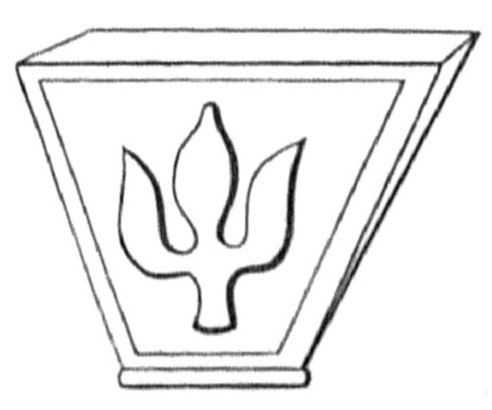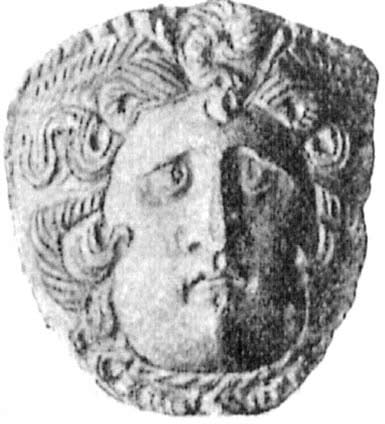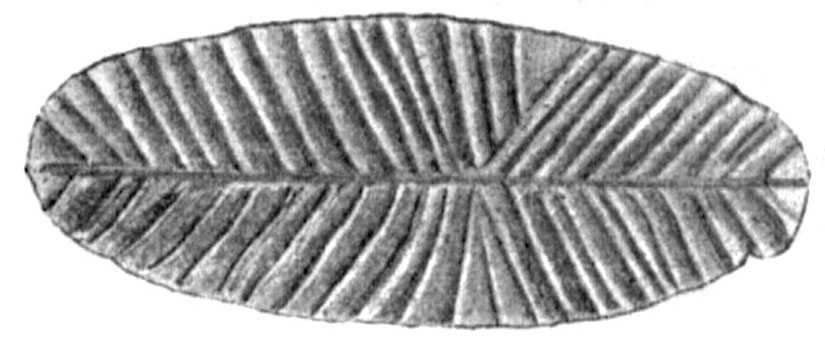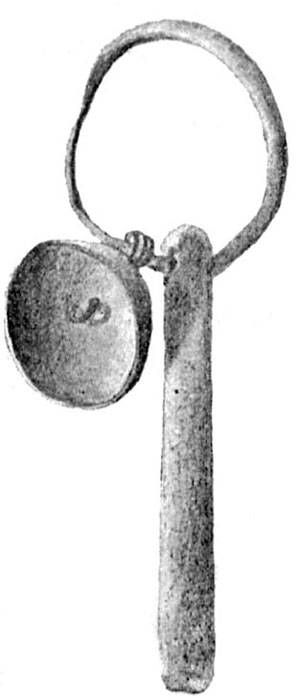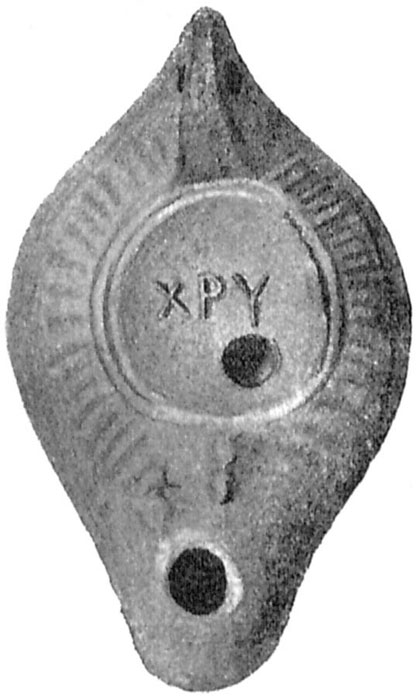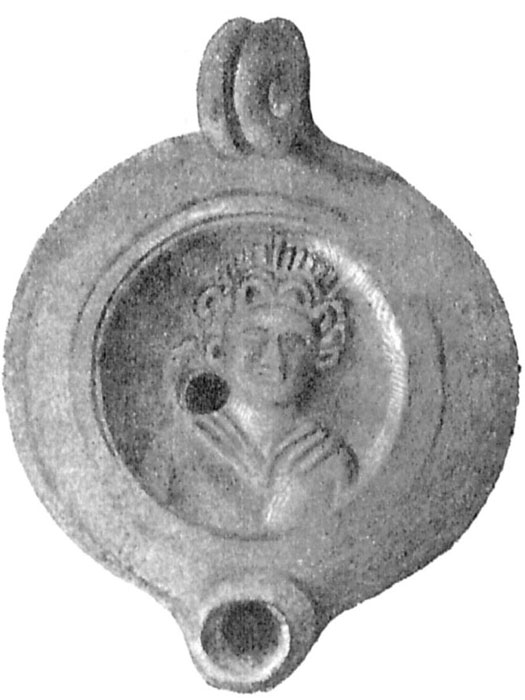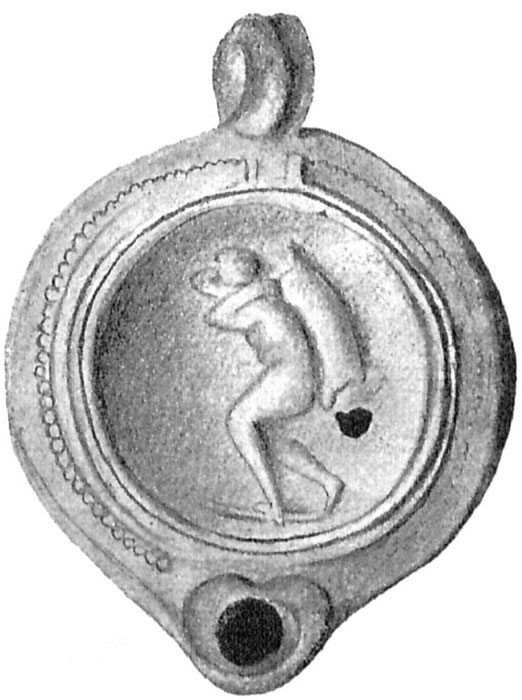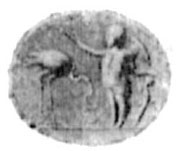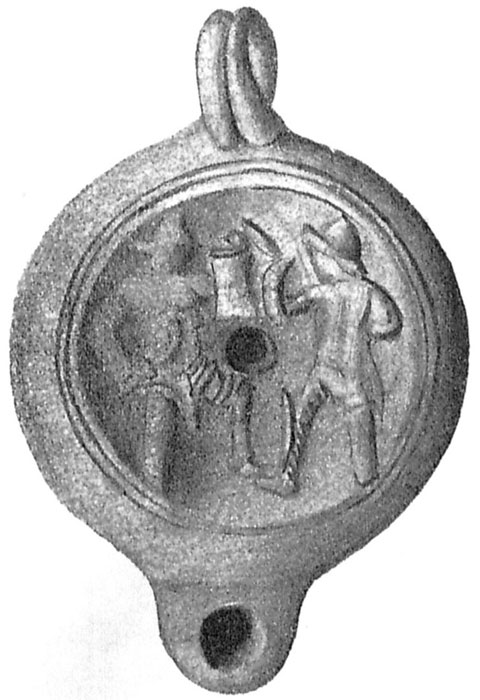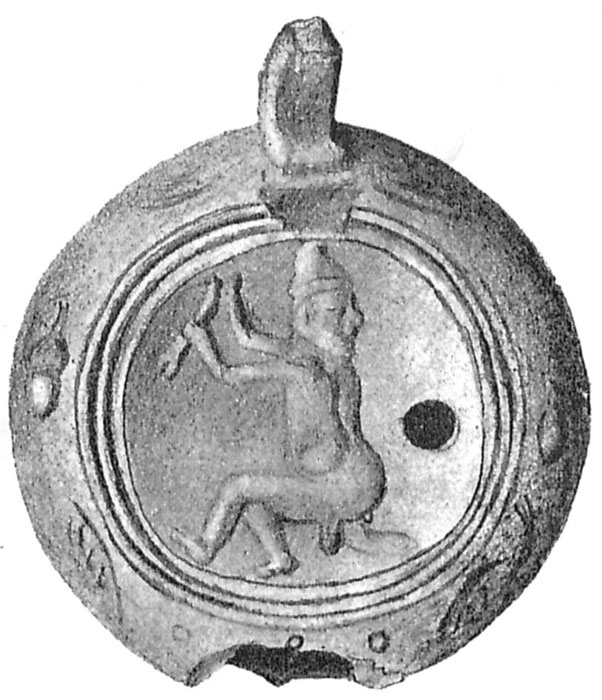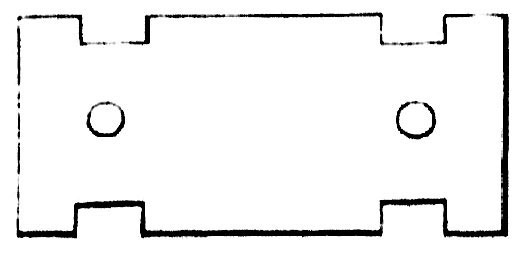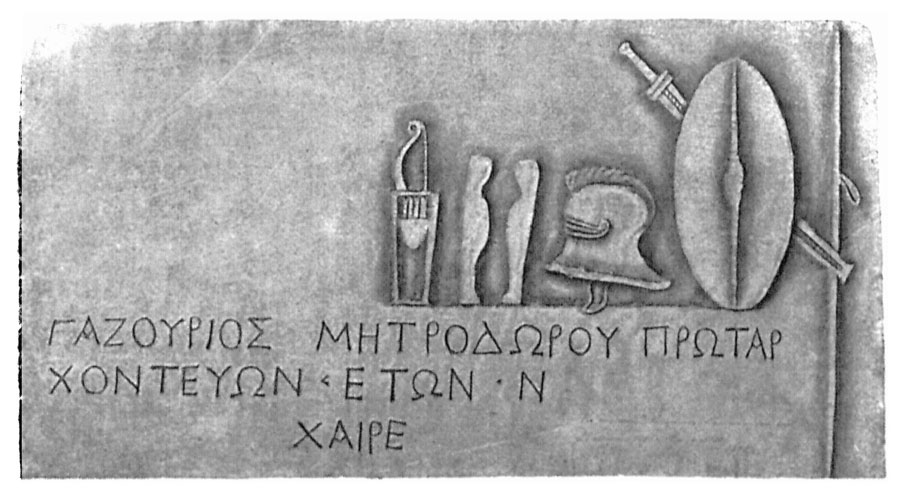 |
 |
 |
|
||
| main :: biography :: texts :: manuscripts :: photographs :: drawings :: squeezes :: publications :: about | ||
|
Year of 1892...
THE EXCAVATIONS IN CHERSONESOS
Here, under the supervision of the Archaeological Commission's employee K. K. Kostsyushko-Valyuzhihich, the works continued both to explore the ancient city site and to make further investigation of the vast necropolis at the south wall. The ancient city was investigated in four areas: 1) on the square near the new church, 2) in the south-eastern extremity, 3) in the north-western extremity, and 4) on the northern seashore. 1) The excavations on the square near the new church started in 1890; in the year under report, they were finished in the south side, in between of remains of two basilicas, which had been uncovered earlier, and a slope, which developed of the soil and stone moved there when planning the square in 1861.
These works succeeded to unearth: on the threshold of big basilica, there was marble pedestal for a statue, with holes for feet, one circular and three elongated slots, filled with lead, and with three lines of Greek inscription saying that the statue was raised in honor of some Bionos by his son Antizio, priest of "Parthenos"; two fragments of marble cornice with Greek inscriptions; fragment of marble cornice that fell into two pieces because of fire; marble capital with rough image of trefoil on each of its 4 sides (fig. No 7) ; fragment of marble slab with image of double cross within circle; fragment of marble slab with images of crosses and slots in each bottom corner to place it between columns (these slots at the bottom of the slab corresponds to projections of base under column); elongated marble capital with 2 crosses; 2 damaged marble bases; 2 big fragments of round marble columns and 32 small fragments of columns, slabs, capitals, bases and cornices; 76 slabs of white and yellow marble floor mosaics; 2 two fragmented bottoms of glazed bowls with image of St. George, on the horseback, wearing chain mail, holding spear and shield on one of them, and bird with spread wings on the other; several fragments of other glazed vessels with patterns but without images of humans or animals; fragment of pithos neck with Greek inscription scratched on it; fragment of red clay bowl with cross and few Greek symbols (it was unearthed in the right chapel of the basilica with marble floor); 2 feet of glass cups (such feet are discovered in top layer of the ancient city only, and never appear when investigating the ancient necropolis); plain earthenware lamp of rough workmanship; 12 glass bracelets of various size (from the tomb at the south side of the basilica); 6 fragments of glass bracelets; the following bronze artifacts: plain cross for icon lamp chain, riveted, with 2 holes for fastening chains, with stabbed monogram and abbreviated Greek inscription, thick icon lamp chain with plain cross of rough workmanship riveted to the middle of it, cross with fragment of chain, fragment of chain and hook for icon lamp, 4 buttons, 3 bracelets, 2 buckles, thimble, sword-shaped pendant, and pestle-shaped <strap->end; later, fragment of iron plowshare for wooden plow; 2 millstones; 2 sharpening grindstones; 2 clay balls; 3 round bone chips; 2 bone dice; 3 wild boar's tusks; bone circle, with hole and decorations; 6 clay circles with holes; 2 lead seals with Byzantine inscriptions; carnelian gem, oval, with image of crab carved into its surface; 174 bronze coins of the later Roman and Byzantine emperors, most part of bad preservation; 2 oriental coins from Asia Minor (1 silver piece and 1 bronze), and 88 bronz<e> coins of the Byzantine Cherson minted under Justinian, Maurice, Basil I, Constantine VIII and Basil I, Romanus I, Romanus II, Constantine Х, Romanus II and Constantine Х, and Basil II. Marble floor of the big basilica was not removed, hence the inner part of it was not studied, as it would not be possible to restore the crackle floor slabs, which made the main interest to the visitors, in the same form. Unexplored remains the whole eastern area of the square, where some temporary constructions are located, and, just behind them, there are huge heaps of stone, that would be moved away after the above-mentioned temporary constructions are pulled down. 2) Reconnaissance in the south-eastern extremity of the ancient city site, in between of the wharf of the military engineering department and half-ruined military dugout was started because the warehouse of antiquities originated from the excavations started in 1888 would be moved to that place. In the western area, in the direction from the watch house to the s<outh>-e<ast>, remains of greatly damaged wall, built with lime mortar, that reached the bay and was unusually hard, were discovered. In the east corner of the wall, from where it turned s<outhwards>, to the sea, there was draining canal of stone slabs with lime mortar that receded under the soil. It appeared possible to keep this canal, because
There is a ditch for placing cable dug through nearly all the area, from n<orth> to s<outh>; it destroyed the walls of upper buildings which it met on the way and a part of the above-mentioned wall mortared with lime. There was a hill at the place of the draining canal giving the one a reason to think that here the wall finished with a tower, but the excavation has not confirmed that this suggestion was true: the ground appeared to be fragile and be raised in a relatively recent time. There are several half-ruined dwelling rooms and two big crushed pithoi uncovered to the e<ast> from the cistern; further, the area was crossed by the second, wide ditch for cable, which cut chancel of small altarless church. Those who were laying the cable certainly did not suspect that they would break the apse, otherwise they would recede 2-3 arch<ines> to the east. In this case, the altarless church would preserve completely, though now half-ruined walls and remains of stone-slabbed floor, under which six tombs were located, remained of it. Only bones were uncovered from these tombs, similarly to two other tombs outside the church. Remains of the walls of the most ancient Chersonesos and two broken into smallest pieces pithoi were discovered in the eastern corner, on the sea shore; besides that, there were artifacts uncovered from the soil: marble, heavily damaged woman's head with hairs collected into knot on the back; terracotta woman's head of good workmanship; 24 amphora handles with astynomoi's names, and 22 shards of fine earthenware pottery coated with black slip. The finds from the other parts of this area are: bronze, well-preserved censer of the form that was not known before; fragment of small glazed icon with part of image of Mother of God (head and legs are missing; on each side, a bit lower than the neck, there was an inscription, of which three letters preserved on the right side); fragment of bronze cross, heavily damaged by rusting, with traces of roughly carved inscription and pointed rod, by which the cross could be fastened to shaft; bronze cross in circle; bronze reliquary cross without inscriptions nor images; earthenware censer; 6 fragments of bronze chain for icon lamps; fragments of bronze bowl; stone mortar and fragment of another mortar of marble; stone basin; 3 millstones; fragment of marble column; marble base of medium size; 4 fragments of marble lattice; 10 solid roof tiles (one of them has traces of naked child's leg and two has tracks of dog's paws); amphora handle with monogram; 20 bronze fishhooks; fragment of marble slab with Greek inscription, of which only 2 letters survived; fragment of iron sword, heavily damaged by rusting; 3 throwing stones; bronze buckle; fragment of bronze key; round iron lock; bronze and iron parts of locks; two earthenware pitchers, one of which contained charred millet that excellently kept its form; earthenware juglet; 6 bronze buttons; bronze closed bell; bronze needle for knitting fishing nets; 4 glass bracelets; 3 bone awls; 2 bone circles with hole; the same but clay circle; 2 clay balls (of these one has cross-shaped holes); 2 bone checkers; 3 silver gilt circles with openwork ornament, caked together because of fire; 2 glazed bowls; fragment of roof tile and bottom of glazed vessel, either with image of bird; several shards of glazed pottery; 2 oriental coins (1 silver and another bronze one); 70 bronze coins of the Roman and Byzantine emperors, of bad preservation, and 90 bronze coins of Byzantine Chersonesos. 3) When continuing the works in the west corner of the ancient city site, where two small churches were uncovered in 1891, in the chancel of one of them, to the left from the pit paved with marble slabs which probably was used as casket for relics, at the distance of 15 vershoks, carved into bedrock tomb (3 arch<ines> long, 1 arch<ine> wide, and 1 arch<ine> deep) was uncovered; it was covered with two thick stone slabs and contained skeleton, completely rotted and accompanied with fragments of decayed textile with remains of gold threads, and silver parts of small casing for Gospel, namely: corner plates with remains of wood inside, clasps and cross representing Christ's monogram, with seven pins for fastening a board above. Behind the south wall of the other small church, there were 3 tombs containing, besides bones, 2 glass child's bracelets, bron<ze> earring, and fragment of bron<ze> key. At the very wall, on the outside of the same church, there was marble, with one side broken, cornice or, perhaps, fragment of big baptismal font. The following artifacts were uncovered from the soil removed in course of the excavations: 2 shards of glazed earthenware pottery (one of them in the form of bird's head); round earthenware sinker; lead ring-shaped sinker; piece of tar; fragment of marble mortar; fragment of thin column of gray marble; dark blue oval glass for finger-ring; 2 fragments of glass bracelets; plain bronze ring; 25 bronze coins of Byzantine Chersonesos; 4 bronze coins of the Byzantine emperors, and 1 oriental bronze coin. 4) On the north shore, the final excavations were arranged for the small church, adjacent to Uvarov basilica, that had been excavated in previous years by Odessa Society of History and Antiquities. In this small church, there was floor of marble mosaic, discovered by the Society, which was gradually plundered despite of it was opportunely encircled by wall of ashlars. In 1892, Mr Kotsyushko-Valyuzhinich removed these walls as they lost their significance and used the ashlars for a fa?ade of the new room intended for warehouse of antiquities, and removed the soil from under the former mosaic floor as deep as bedrock, on which (at the depth of 1 sazh<ene> and 6 versh<oks>) there were the foundation of the small church and pillars for 4 columns. Here, the left chapel was taken by the sea long ago, the same as that of the adjacent Uvarov basilica. In order to save the other parts of the churches from demolition, all the stones collected from the excavations are thrown down from the shore to strengthen the latter from below. In front of the altar screen, to the left, there was a tomb constructed of slabs and paved with roof tiles; 3 completely perished skeletons and big well preserved bronze thimble were found in this tomb. Closer to the entrance, there was another tomb of slabs, that contained one skeleton. Outside tombs were investigated simultaneously with the discovery of the mosaic floor and were destroyed long ago. There are the following fragments of the mosaic floor, which were not noticed by those who searched for the antiquities and destroyed them and were taken from the soil now at an inconsiderable depth: 12 fragments of semicircular border of white marble; 8 pieces of many-colored marble mosaic; half of a circle (8" in diameter) of greenish gray spotted marble, fragment of bigger circle of the same marble, 1 ½ thick; border of semicircular strips of white marble of different width, and multitude of glassy mosaics, many-colored and with gilding. The smallest area of the seashore occupied by this small church is of great scholarly interest because it consists of uninterrupted layer of the most ancient Chersonesos at the depth of approximately 3 ½ arch<ines>; this assumption is confirmed with the following finds discovered there: bronze coins of Kerkinitis, Panticapaeum, Amisos and Chersonesos (of the Greek period); 8 amphora handles; 3 fragments of roof tiles with Greek inscriptions; multitude of earthenware sinkers shaped like truncated pyramids and having images of human figures and animals (the images are worn off some sinkers probably because of the long use); 46 shards of fine earthenware pottery covered with black slip (of which 3 have drawings, 3 scratched initials, and 2 molded images); earthenware lamp covered with black slip; fragment of clay ornament; lion's head, carved of limestone, with open mouth (4 ½" long and 4 ½" in diameter at the neck) and circular hole in the neck proving that this head was aimed for a water reservoir; miniature earthenware pitcher; 2 throwing stones; 2 bronze arrowheads; 10 fragments of wall plaster of red color; fragment of plaster with strips of yellow and red color and plaster fragment painted a la mosaic with yellow, red and green colors. This area reconnaissance will be finished in the next year. Further investigation of the cemetery discovered in 1891 at the south wall of Chersonesos was made, as before, by passing along the slope of the hill, from the footstep to the top. In the area of about 279 sq<uare> sazh<enes> of the mound laying on the slope that was unearthed, there were, at various depths, 245 graves, contents and constructions of which were listed in the l-st Appendix to the given Report. Of these, 14 consisted of urns sunken to the ground (1 bronze and 13 earthenware ones); one grave was carved into bedrock, 5 (including 3 child's) were faced with stone slabs, among which there were slabs with inscriptions and relief images removed from more ancient graves, four graves were covered with roof tiles, the rest 221 ones (of which 18 for children) were faced with fine stone. The urns and two graves (nos. 136 and 144) contained cremated human bones, all the others housed inhumated skeletons including 3 with deformed skulls (gr<aves> no. 98, 104 and 126); the most part of the skeletons were oriented with the head to n<orth> and legs to s<outh>. Two graves (118 and 119) were arranged one under another, though grave 272 contained two skeletons, one on the other. Three graves (77, 101 and 110) appeared to be undoubtedly plundered in former times. Remains of the dead kept in urns were usually accompanied only by small gold leaves, though three urns (nos. 76, 91, and 237) contained, besides that, glass balsamaria, one urn (no. 95) included bronze ring, another (no. 243) two pairs of gold earrings decorated with garnets and gold impression of coin. Cremated bones placed in two graves described above (nos. 136 and 144) were accompanied only with one bronze coin each. There were only 24 graves with inhumated corpses accompanied with one bronze coin each (s<ee> gr<aves> nos. 119, 150, 162, 187, 189, 190, 207, 212, 227, 235, 254, 255, 268, 299, 302, 309, 311). In grave no. 98, skeleton was not accompanied even by a coin.
These simple and pierced beads have very different purpose: big pierced beads of dark glass in the form of hemisphere having two holes in each were used, according to their position on skeleton, as belt decorations; big jet, semicircular ribbed pierced beads, which also have two holes, composed bracelets. Beads of multicolored paste, of medium size, were threaded on thin bronze hoops which were worn in this way as bracelets; bronze toothed circles and rings were sometimes hanged to them. Rock crystal and carnelian beads, round and pear-shaped, were hanged with wire to silver earrings. Many bronze earrings have one glass bead each. Beads were threaded (glass beads alternated with beads of another materials) either on thin cord or on silver chain leaving, in the latter case, intervals of chain's rings. Ribbed beads of yellow, green and blue glass paste were sometimes put on gold tubes, tips of which projected outside. Amber amphora-shaped beads were selected so that the smallest were located on the ends of the necklace and the biggest one was in the middle.
Most part of graves contained pottery: earthenware pitchers, saucers, plates, bowls, fine vases and cups, and glass balsamaria, bottles, etc. There was a number of earthenware lamps, party plain and partly with relief images of Helios (see fig. No 17), male figures (see fig. No 18), ram, birds, sheep, wild boar, Pegasus, deer, bunch of grapes, star; one lamp has Greek inscription XPY (see fig. No 16), another Latin CASSI. Finally, many graves contained, apart from bronze Chersonesos coins, bronze and silver coins of Bosporan kings (Cotys II and Cotys III), autonomous cities (Panticapaeum, Caesarea, Dioscuria, Sinope, Amisos, Amastris), and Roman of the time of Nero, Vespasian, Septimius Severus, Caracalla, Heliogabalus, Alexander Severus, Maximinus, Gordianus III, Gallus Trebonianus, Gallienus, Claudius II, Dioclatian, Maximianus I, Constantine the Great, Constans and Constantius.
Besides the finds made in tombs and urns, there were artifacts discovered from soil and gravel of the mound that covered the graves: seal in the form of truncated cone of gold ribbed plate, with ring soldered to its upper part and oval carnelian, inserted on the bottom, depicting carved images of Eros with staff projected forward and flamingo crouched to catch snake; there is some unclear image behind Eros's back (see fig. No19а) и (see fig. No19б), pair of gold, heavily damaged by fire, earrings with stones representing Erotes and with 3 beads hanged to it by 3 gold wires; big glass bracelet which ends are not joined together (there is similar but smaller bracelet uncovered in tomb no. 313); expandable bronze bracelet; silver neck ring; silver brooch of rough workmanship; 5 bronze brooches; 12 bronze buckles; iron athlete's scraper; 2 bronze keys; iron circular mortise lock; bronze arc handle; fragment of bronze openwork circular lid with handle in its centre (there are intact lids uncovered in tomb nos. 116 and 223); pierced tooth of bear (?); 6 glass balsamaria; 25 earthenware juglets; earthenware plate; 20 plain earthenware lamps; 3 earthenware lamps with images of combat of two gladiators on one of them (see fig. No20), and naked sitting man, wearing pointed cap, with his head turned back on the other (see fig. No21);
of dog under the tree barking on wild boar on the third; 11 earthenware vessels; 98 stamped amphora handles (from Phasos, Rhodes and Chersonesos) with the names of astynomoi of Chersonesos: Nanonus, Heracles, Matrios, Bafilus, and others; 9 fragments of ancient roof tiles with Greek inscriptions; 3 earthenware sinkers in the form of truncated pyramids, with stamps; terracotta head from woman's statuette; terracotta figure of dog without legs; 2 lead votive symbols in the form of plain circles (one of them has image of dolphin on face side and bull's head decorated with festoons on back side, another Hermesus's head wearing petasos on face side and, similarly, bull's head on the reverse side); bone handle for a small bell; pierced shell; small bronze ring; bronze needle; lion's head pressed in relief in bronze badge, with mounting holes; bronze arrowhead; top part of grave stele of sandstone depicting man and child and having two lines of Greek inscription; top part of grave stele of sandstone with 2 rosettes and the end of Greek inscription; top part of grave stele of sandstone with roughly carved bust of bearded man; gravestone of sandstone, quadrangular, with Greek inscription and two round slots cut from below, opposite to which along the long sides 4 cuts are made , as it is shown on fig. No 22;
Furthermore, in the same embankment were found: top part of marble grave stele with image of a man in semi-laying position, with a wreath in his raised right hand a woman sitting at his legs; two fragments of marble grave steles with a few damaged letters of a Greek inscription on one shard and of Latin inscription on the other; child's gravestone of sandstone similar to that depicted in 1891 Otchёt Arkheologicheskoy komissii [Report of the Archaeological Commission] (p. 18, fig. no. 10); marble decoration like that published in the same Otchёt (p. 18, fig. no. 11); fragment of cornice of gray marble; bronze image of a small pedestal similar to present-day seals; bronze tongs-pliers; bronze key fixed to a ring; bone carved handle of unknown purpose; bottom of earthenware amphora with red paint; throwing stone; white marble slab, which edges are beveled on one side; the same slab of slate with carving on top; piece of carved sandstone cornice with egg-and-darts; silver and bronze coins of Chersonesos (of the periods I and II), Apollonia, Amisos, Sinope, Caesarea, Panticapaeum, Bosporan kings and Roman emperors Gordianus III, Decius, Aurelianus, Probus, Dalmaius, Valens, Theodosius the Great, Arcadius, Constans III, Leo I and Justinian I. The inscriptions mentioned above will be published in one of the volumes of Materialy po arkheologii Rossii (Materials for the archaeology of Russia).
From 1892 Report of the Imperial Archaeological Commission signed by the Chair, count A. A. Bobrinskiy. Published in Saint Petersburg in 1894.
|
| ©National Preserve of Tauric Chersonesos . 2007 - 2026 |
